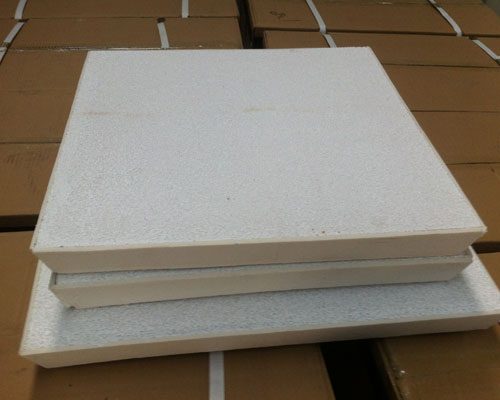The ceramic foam filters for metal casting can remove inclusions in the aluminum melt. As the quality requirements for aluminum products increase, the requirements for filtration quality are getting higher and higher. Inclusions usually exist in the melt in three forms: metal oxides; foreign matter such as refractory chips; particles introduced during melt processing.
Generally, there are three methods to remove particles suspended in the melt: precipitation, where the particles accumulate at the bottom of the melt; floating, where the inclusions float on the surface of the melt; after filtration, the particles are separated from the melt through a porous medium.
When the particle density and diameter are large, natural sedimentation usually occurs, and the static sedimentation of particles smaller than 90 pm is not very effective. The bubbles or molten flux generated in the traditional gas dehydrogenation or flux treatment process will cause the inclusion particles to float to the surface of the melt. In most cases, this mechanism can effectively remove inclusions above 30um. Filtration refers to the process in which the melt flows through densely packed spheres, glass fiber fabrics, metal meshes, ceramic foam filters, or other porous media to separate inclusions from the melt. The advantage of the ceramic foam filter is that it can remove inclusion particles whose diameter is much smaller than the through-hole.
The molten metal filter has the advantages of good chemical stability, high specific strength, high-temperature resistance, thermal shock resistance, large specific surface area, good slag removal effect, simple operation, easy matching with other parts, and low cost. Therefore, it has become a conventional purification method in aluminum alloy production. Studies have shown that ceramic foam filters for metal casting can also reduce the hydrogen content in the aluminum melt.
The usual ceramic foam filter manufacturing method is to immerse polyurethane sponge in ceramic mud, squeeze out the excess material and dry it. Finally, it is sintered at a high temperature to form a three-dimensional porous ceramic material, which is a curved and interconnected tube with a non-uniform thickness. It is this uneven tube wall that plays a key role in capturing the small inclusions in the aluminum melt. This structure also increases the chance of aluminum melt contacting the ceramic part of the filter, thereby increasing the possibility of inclusions being adsorbed.

